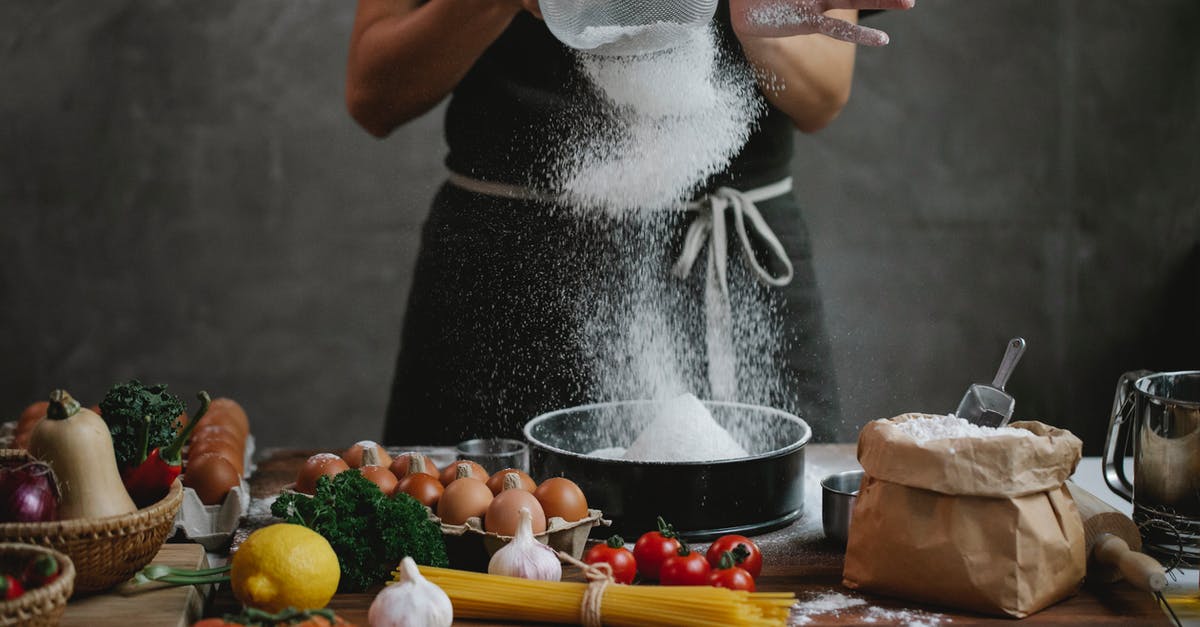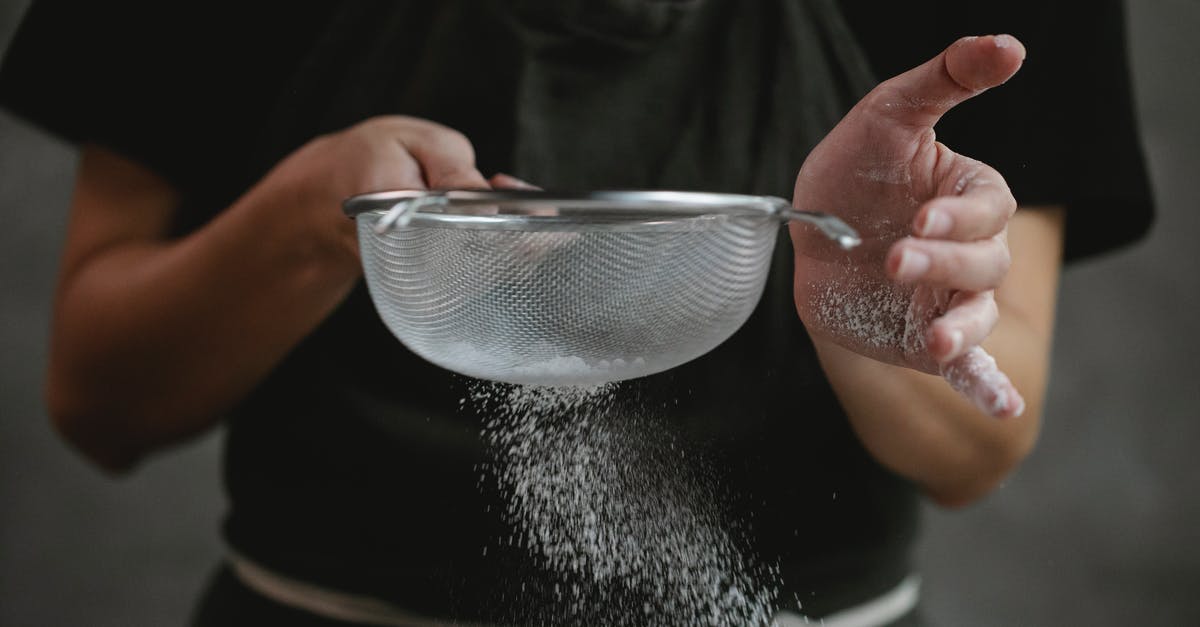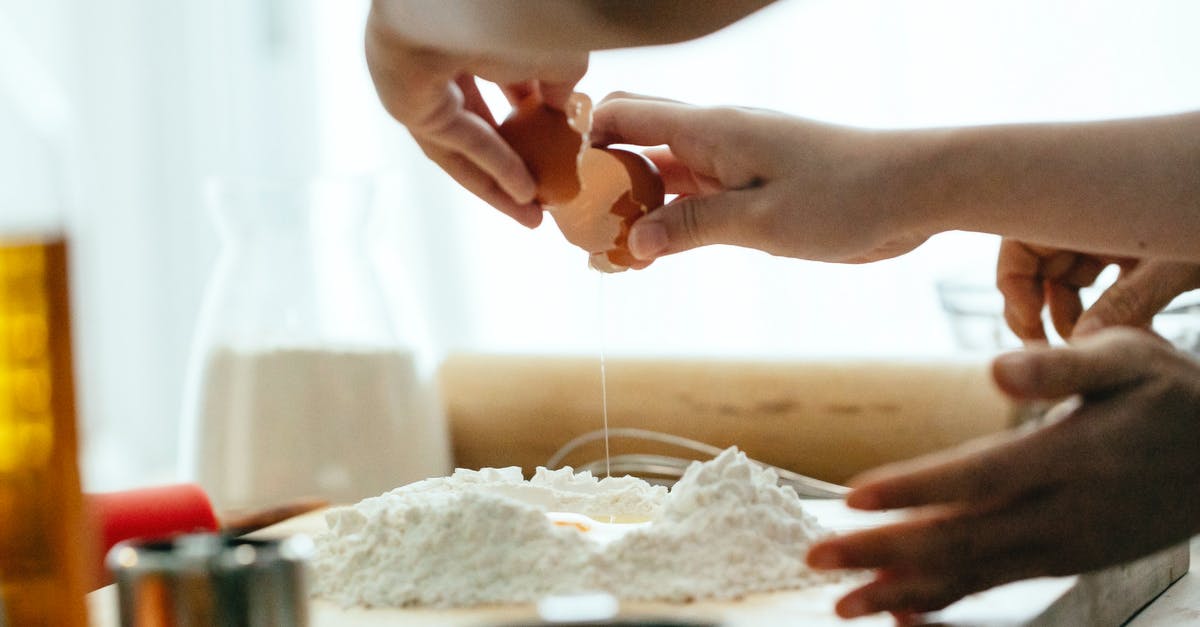Why does wind blowing on pretzel dough add a chewy texture?

One of the steps in this pretzel recipe is:
Once the dough has risen, place the trays next to a cold window with some wind blowing. A fan can be used if there is no breeze. This develops a skin on the pretzels which gives that special chewy texture.
What does the breeze do to contribute?
Note: This is done before the boiling step.
Best Answer
My best guess is that it will dry out the surface of the dough. It may also pull some moisture from the inside of the dough, in addition to drying out the skin. A fan or breeze will let the air pull moisture from the dough - the exposure to a larger volume of air tends to pull moisture off, one reason it feels cooling. The effect should be greater as the recipe specifies cool air, which tends not to hold enough moisture or humidity to interfere with this drying.
It makes sense that a dough with a dryer skin may be easier to handle during the boiling step, being sturdier and less likely to stretch or deform while being handled. And I'm not sure, but I think a softer dough might be easier to work or shape, or the uneven drying to have other textural effects, which might be the reason drying the dough out a bit is better than simply using less water to begin with.
The dough will be boiled after this step, but while that will add moisture to the dough, the effects should persist. A dough that was dried before boiling will still have less moisture than a dough that was not, after both are boiled - boiling can only add so much moisture in such a brief time. Also, a dried skin on the dough would also help limit water absorption during the boiling, since the water has to work through the skin to reach the interior.
Time and temperature also make a difference - a soak would certainly soften the skin back up, but the recipe's brief dip in boiling water will not have time to soften the skin before the heat starts setting it. It would be similar to how starch forms sturdy, chewy lumps if dumped into hot water, but would dissolve in cold and when heated thicken the liquid smoothly instead of forming clumps. In this case, I'd guess the boiling would heat-set the starches of the dried skin faster than it can re-hydrate.
Another possible analogy that might help would be baking bread - the dough can easily form a skin when baking that changes the texture (by interfering with oven spring) which does not let it rise as easily, making a denser and chewier loaf. Since that texture is usually undesirable in bread, it is prevented by keeping the surface of the dough moist and pliable with water or oil, and scoring the bread to give room for expansion.
It is additionally possible that heat-setting the dough, by boiling, also helps to set the shape and support a sturdy skin on the dough in order to interfere with any oven spring the pretzel dough might undergo, again giving a denser and chewier texture. If so, both effects may stack for a more pronounced result.
Of course, much of this is speculation. The exposure to air will dry out the edges and form a skin, but it is possible that there are some additional benefits (controlling temperature or affecting starch structure, perhaps) that come from adding this step to the recipe that I am unaware of.
Pictures about "Why does wind blowing on pretzel dough add a chewy texture?"



Why is my pretzel dough so tough?
Overworked dough can happen when using a stand mixer. Dough will feel \u201ctight\u201d and tough, as the gluten molecules have become damaged, meaning that it won't stretch, only break, when you try to pull or roll it.What happens if you let pretzel dough rise too long?
If you let the dough rise for too long, the taste and texture of the finished bread suffers. Because the dough is fermenting during both rises, if the process goes on for too long, the finished loaf of bread can have a sour, unpleasant taste. Over-proofed loaves of bread have a gummy or crumbly texture.How much baking soda and water do you put in pretzels?
In a large, wide pot, bring 6 cups water and 2 tablespoons baking soda to a boil. Then, transfer one shaped pretzel to the bath using a slotted spatula and let sit for 1 minute.What makes a pretzel a pretzel?
So what makes a pretzel into a pretzel? The answer lies in a brief dip in an alkaline water bath before baking. This bath essentially gelatinizes the outside of the pretzel, preventing it from fully \u201cspringing\u201d during baking (as bread does) and giving pretzels their signature chewy crust.Soft Pretzel Recipe
More answers regarding why does wind blowing on pretzel dough add a chewy texture?
Answer 2
It would indeed dry the outer layers out. Honestly, I'm surprised that it would make a big difference, because it would be such a thin crust (unless you leave it for a long time). I've never done this for a pretzel, nor seen it in a recipe. I would love to hear the results of an experiment, though, if you do half "under fan" and half "normal".
That said, I would believe that it makes the pretzels easier to handle, and more likely to maintain their shape on the way to the boiling water. It may also help the pretzels maintain their geometric stability in the first instants of boiling--by creating a dehydrated, tight layer on the outside, it gives less the pretzel less room to stretch and deform.
If you really do dry it out long enough for the decreased hydration to be more than a millimeter or so, then you'll end up with a hydration gradient across your pretzel. In that case, the outer layer should have a tighter crumb than the interior--like the difference between sandwich bread and ciabatta, though less extreme.
Sources: Stack Exchange - This article follows the attribution requirements of Stack Exchange and is licensed under CC BY-SA 3.0.
Images: Klaus Nielsen, Klaus Nielsen, Katerina Holmes, Katerina Holmes
